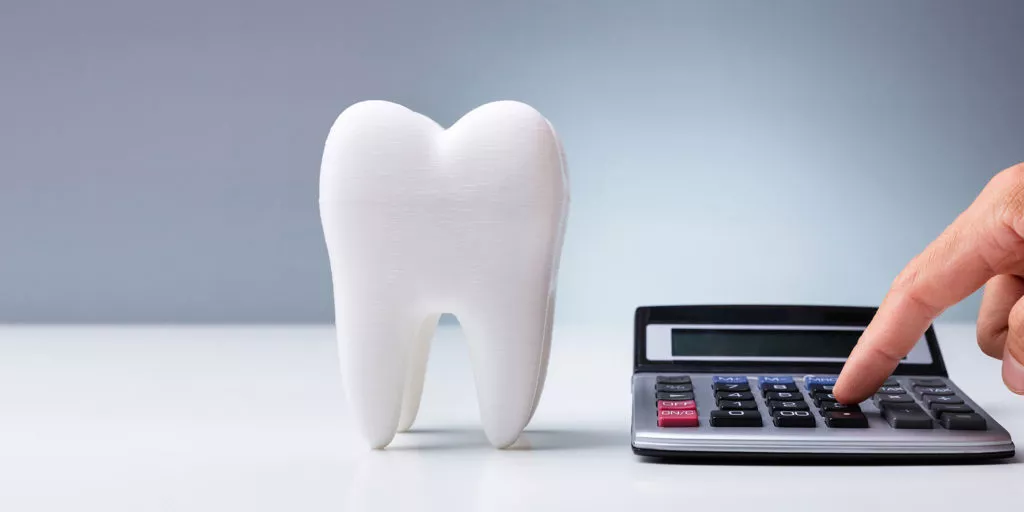How Does Dental Insurance Work? An Overview Of Coverage

Do you have questions about how dental insurance works? Understanding dental insurance coverage can be confusing, but it doesn’t have to be.
In this article, we’ll give you an overview of dental insurance and how it works. Learn about what is covered by dental insurance, deductibles and co-insurance, benefit amounts, preauthorization requirements, choosing a plan, and how to maximize your coverage.
We’ll also provide information on cost factors for dental procedures and answer common questions about dental insurance.
So, let’s get started and give you the information you need to make the best decisions for your dental coverage.
What Is Covered by Dental Insurance?
Wondering what’s included in dental insurance plans? Read on to find out!
Dental insurance typically covers preventive care such as checkups, x-rays, and cleanings. These services are important in helping you maintain a healthy mouth. Dental insurance also usually covers basic restorative care, like fillings and root canals.
More extensive work such as crowns, bridges, implants, and dentures is often covered, though usually at a lower rate than more basic services. Some plans even cover orthodontic work like braces.
It’s important to note that most dental insurance plans have a yearly maximum, so you won’t be able to receive an unlimited amount of coverage. Additionally, some dental insurance plans may not cover certain services, so it’s important to read your plan’s documentation and talk to your insurance provider to make sure you understand exactly what is covered.
Deductibles and Co-Insurance
Confused by what deductibles and co-insurance entail? Picture it like a highway with multiple tolls – you’ll have to pay something at each one before you reach your destination.
Deductibles and co-insurance are two terms often used in the context of dental insurance plans. A deductible is the amount you pay out of pocket before your insurance company pays for the rest of the services. Co-insurance is the percent of the cost of a dental service that you must pay after the deductible has been met.
Deductibles and co-insurance are important parts of dental insurance plans. A deductible is the amount that you must pay out of pocket before your insurance company pays for the rest of the services. Deductibles can vary in amount and you can expect to pay the same amount at each visit.
Co-insurance is the percentage of the cost of a dental service that you must pay after the deductible has been met. The amount you must pay will depend on your plan and the services you receive.
Maximum Benefit Amounts
Do you want to know how much your dental insurance will pay out? Maximum benefit amounts are the maximum amount your insurance will cover for a certain service or procedure. Generally, the maximum benefit amount is determined by the type of insurance plan you have and the type of service or procedure you need.
Some plans may have a maximum benefit amount for a given year, while others may have a lifetime maximum amount. It’s important to understand your plan’s maximum benefit amount, as this will determine how much you will need to pay out of pocket for certain services.
It’s also important to know that maximum benefit amounts can vary greatly between different types of dental services and procedures. For example, a plan may have a maximum benefit amount of $2,500 for routine cleanings and exams, while the same plan may have a maximum benefit amount of $5,000 for major services like root canals or crowns.
Knowing the maximum benefit amounts for your specific plan is key to understanding how much your insurance will cover.
Not sure what preauthorization is? Don’t worry – we’ll explain it in simple terms!
Preauthorization is a process that is put in place by your insurance company to make sure you get the coverage you’re entitled to. The preauthorization process requires your dentist to submit a treatment plan outlining the services you require to your insurance provider.
Once the treatment plan is approved, the insurance provider will cover the cost of those services up to the maximum benefit amount stated in your policy. In some cases, the insurance provider may require a preauthorization for certain treatments or services in order to make sure the cost of the procedures is covered.
However, you should always check with your insurance provider to ensure you’re following the right procedure.
Choosing a Plan
Choosing the right dental plan can be overwhelming, but taking the time to research your options can help you find the plan that best suits your needs.
When looking for a plan, it’s important to consider the type of coverage it offers, the cost of premiums, and the network of dentists available. Most plans will cover preventive care such as regular checkups, cleanings, and X-rays. However, you should also consider the coverage for more serious procedures such as root canals, crowns, and orthodontics.
Additionally, it’s important to look into the details of the plan such as the co-payments, deductibles, and annual maximums. It’s also important to consider the cost of the premiums. While some plans may have lower monthly premiums, they may also have higher deductibles or co-payments.
Furthermore, you should make sure that the plan has a network of dentists that you are comfortable with. Many plans have a network of providers, but you should make sure that they accept your plan before you commit to it.
By researching the different plans and considering all of these factors, you can find the plan that best fits your needs.
How to Maximize Your Coverage
Maximizing your coverage means making sure you get the most out of your plan, so take the time to understand the details of the plan and make sure it fits your needs. Taking the time to read through your plan’s information will help you make sense of the details and understand what’s covered and what’s not.
Here are some tips for maximizing your coverage:
- Have an understanding of your plan’s annual maximum and deductible.
- Determine which dental services are covered and which aren’t.
- Ask your dentist if any treatments or procedures are covered by your plan.
- Look into getting additional coverage or a supplemental plan to cover services not included in your primary plan.
- Make sure to use an in-network dentist to get the most out of your plan.
Cost Factors for Dental Procedures
Understanding the cost of dental procedures is essential to making informed decisions about your oral health care. The cost of dental procedures is determined by several factors, including the type of procedure, the materials used, the complexity of the procedure, and the geographic location of the practice.
For example, a dental implant can cost significantly more than a filling since a dental implant requires a surgical procedure and specialized materials and equipment. Additionally, the cost of a dental procedure may vary depending on the geographic location of the practice.
If you’re considering a specific procedure, it’s important to research the estimated costs of that procedure in your area. Your dental insurance coverage can help reduce the cost of dental procedures. Depending on your plan, you may be required to pay an annual deductible, which must be met before your insurance provider will begin to cover the cost of any procedures.
Additionally, most dental insurance plans have a maximum annual benefit cap, meaning there is a limit to the amount of coverage a policyholder can receive in a year. To get the most out of your dental insurance coverage, it’s important to understand your policy’s terms and conditions, as well as the estimated cost of the procedures you need.
Common Questions About Dental Insurance
Now that you know about the cost factors that can affect dental procedures, you may have more questions about how dental insurance works. You’re not alone! Many people have questions about dental insurance, so we’ve compiled a list of the most common questions about dental insurance to help you better understand this important topic.
Here are three of the most common questions people have about dental insurance:
- How much does dental insurance cost?
- What type of dental procedures are covered by insurance?
- How much of the dental procedure costs will be covered by insurance?
The cost of dental insurance depends on a variety of factors, including the type of plan you choose, the amount of coverage you need, and the number of people you’re covering. Most dental insurance plans include coverage for preventive care such as cleanings, checkups, and x-rays, as well as for basic procedures such as fillings, root canals, and extractions.
The amount of the procedure that will be covered by insurance will vary depending on the type of plan you choose and the type of procedure you’re having done.
Conclusion
Now that you know the basics of how dental insurance works, you can make an informed decision when choosing a plan. Consider the type of coverage that you need, your budget, and the cost of the procedures you may need to have done.
Be sure to ask any questions you have about coverage, deductibles, and preauthorization requirements before you sign up for a plan. With the right dental insurance plan, you can get the coverage you need to keep your smile healthy and bright.









